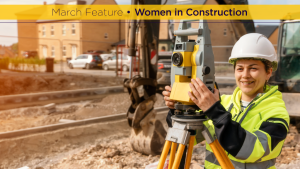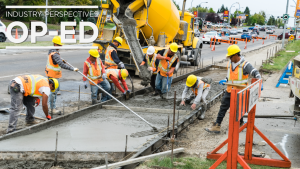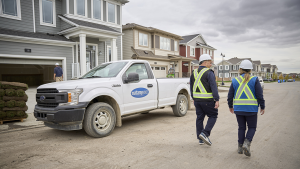(BCCA) president Chris Atchison says while there has been movement to improve skilled trades immigration, more work needs to be done because the labour shortage canтАЩt be solved without new Canadians.
тАЬOn the surface weтАЩre seeing both the provincial and federal governments telegraph some messaging saying theyтАЩre aware of the issue and trying to do the right thing, but moving a system like Immigration, Refugees and Citizenship ║┌┴╧│╘╣╧═Ї (IRCC) is a little bit more problematic than just making an announcement,тАЭ Atchison said.
He pointed to the Government of British ColumbiaтАЩs new Provincial Nominee Program (PNP), which offers a priority stream into the trades, as тАЬabsolutely a step in the right direction.тАЭ
тАЬIt was launched in December, has monthly draws, is based on job offers. Candidates have to be registered with or have valid certificates. ItтАЩs been used to transition people who are already here, which will really work well for those people targeted with the trades,тАЭ Atchison said.
He added the federal government also made progress when they announced category-based draws for skilled trades in 2023.
тАЬThe challenge for both these programs is that their intentions are good, and the messaging is good that weтАЩre starting to pay attention to the skilled trades, but largely these programs will be effective for those already here,тАЭ Atchison said. тАЬThis is the crux of the problem, the message to Canadians is weтАЩre starting to prioritize skilled trades but the reality is we arenтАЩt attracting new Canadians.тАЭ
He emphasized the need to attract people from other countries who want to be in ║┌┴╧│╘╣╧═Ї and have the skills needed by industry but on a more regular cadence than currently occurs.
тАЬFocusing on only people who are here, it has the potential of drying up the pipeline of people. This isnтАЩt just a Canadian issue, itтАЩs a global competition for skilled trades talent. Anytime we arenтАЩt priming that pump with people who want to bring their skills to ║┌┴╧│╘╣╧═Ї we face losing them,тАЭ he said. тАЬWeтАЩre still not making it easy for new Canadians.тАЭ
Tying workers to specific job offers is another roadblock to addressing labour shortages, Atchison said, or obtaining credentials once theyтАЩre in ║┌┴╧│╘╣╧═Ї.
тАЬFor people whoтАЩve gone through that process of coming to ║┌┴╧│╘╣╧═Ї already, itтАЩs expensive to get here and to go through the (certification) process,тАЭ he said.
He added the Temporary Foreign Worker (TFW) program also ties skilled tradespeople to a particular job for a finite period of time.
тАЬThis isnтАЩt feasible or practical given the nature of the construction industry. It makes both parties vulnerable and neither has the stability of a worker benefitting settlement and other government services that would be commonplace for a newcomer coming to ║┌┴╧│╘╣╧═Ї,тАЭ he said.
Atchison added the BCCA is helping newcomers with programs designed to acclimatize them to the Canadian construction industry.
тАЬPeople shouldnтАЩt have to come here and then be frustrated by a system. We do some of this work with our Integrating Newcomers program where we set the managing of expectations for engineers and architects who come here and tell them who the regulatory bodies are,тАЭ he said. тАЬBut the skilled trades equivalent donтАЩt have that same opportunity to have their credentials recognized before they land, so a lot of people are coming here and giving up on the opportunities they might otherwise have.тАЭ
Atchison said employers having to fill out a Labour Market Impact Assessment and petition the government is an antiquated viewpoint that doesnтАЩt address current labour needs.
тАЬWhen weтАЩve got a labour shortage that every expert is predicting isnтАЩt going away in our lifetime, weтАЩre going to have the need for skilled Canadians to come in, whether they come in as TFWs or permanent residents,тАЭ he said. тАЬOur preference is that everyone who comes into ║┌┴╧│╘╣╧═Ї does so with a pathway to permanent residency. We want new Canadians.
тАЬTemporary foreign workers are a short term (solution). TheyтАЩll help in an emergency situation, but when we see good employers in our community not able to access local, provincial and national talent, itтАЩs outside of their comfort zone to have to make petitions to get workers,тАЭ he said.
For more on this interview listen to The Construction Record podcast here.











Recent Comments
comments for this post are closed